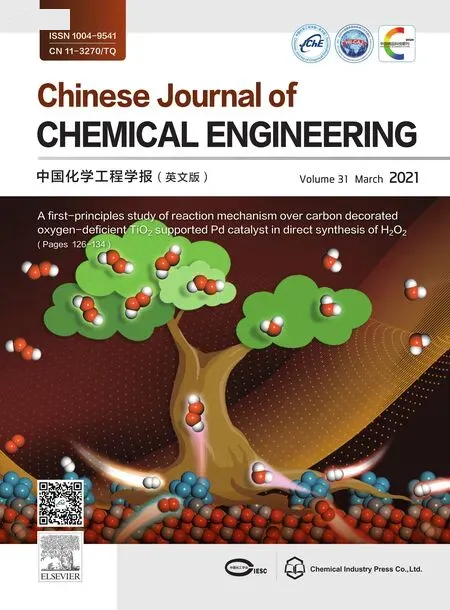
2021年3期
刊物介紹
The Chinese Journal of Chemical Engineering (Bimonthly, started in 1982) is the official journal of the Chemical Industry and Engineering Society of China and published by the Chemical Industry Press. The aim of the journal is to develop the international exchange of scientific and technical information in the field of chemical engineering. It publishes original research papers that cover the major advancements and achievements in chemical engineering in China as well as some articles from overseas contributors. The topics of journal include chemical engineering, chemical technology, biochemical engineering, energy and environmental engineering and other relevant fields. Papers are published on the basis of their relevance to theoretical research, practical application or potential uses in the industry as Research Papers, Research Notes, Chemical Engineering Data and Reviews. Prominent domestic and overseas chemical experts and scholars have been invited to form an International Advisory Board and the Editorial Committee. It enjoys recognition among Chinese academia and industry as a reliable source of information of what is going on in chemical engineering research, both domestic and abroad.
Chinese Journal of Chemical Engineering
- Preface to special issue on frontiers of chemical engineering thermodynamics
- Natural gas density under extremely high pressure and high temperature:Comparison of molecular dynamics simulation with corresponding state model
- A reaction density functional theory study of solvent effects on keto-enol tautomerism and isomerization in pyruvic acid
- Modeling and numerical analysis of nanoliquid (titanium oxide,graphene oxide) flow viscous fluid with second order velocity slip and entropy generation
- Multiplicity of thermodynamic states of van der Waals gas in nanobubbles
- Understanding electrokinetic thermodynamics in nanochannels
- Insight into the behavior at the hygroscopicity and interface of the hydrophobic imidazolium-based ionic liquids
- A large-scale experimental study on CO2 capture utilizing slurry-based ab-adsorption approach
- Structure and dynamics of water in TiO2 nano slits:The influence of interfacial interactions and pore sizes
- Ionic liquids for CO2 electrochemical reduction
- Pyrolysis of vulcanized styrene-butadiene rubber via ReaxFF molecular dynamics simulation
- A novel interfacial thermodynamic model for predicting solubility of nanoparticles coated by stabilizers
- Recent progress of green sorbents-based technologies for low concentration CO2 capture
- A first-principles study of reaction mechanism over carbon decorated oxygen-deficient TiO2 supported Pd catalyst in direct synthesis of H2 O2
- Simulation and assessment of manufacturing ethylene carbonate from ethylene oxide in multiple process routes
- Curvature effects on electric-double-layer capacitance
- A mini-review on the modeling of volatile organic compound adsorption in activated carbons:Equilibrium,dynamics,and heat effects
- Determination of the metastable zone and induction time of thiourea for cooling crystallization
- Prediction and verification of heat capacities for pure ionic liquids
- Effect of dimethyl carbonate on the behavior of water confined in carbon nanotube
- Estimating Hansen solubility parameters of organic pigments by group contribution methods
- Thermodynamic analysis and modification of Gibbs–Thomson equation for melting point depression of metal nanoparticles
- Molecular simulations of charged complex fluids:A review
- Machine learning for molecular thermodynamics
